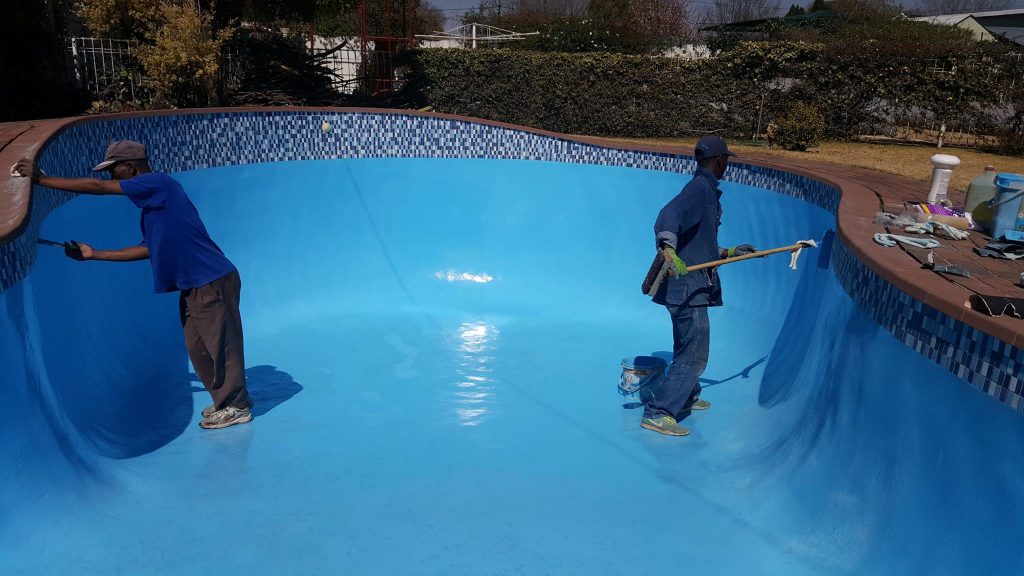Owning a pool is a luxury that provides endless hours of enjoyment, relaxation, and exercise. However, maintaining a pool is a significant responsibility that requires regular upkeep and occasional renovations. One of the most critical aspects of pool maintenance is ensuring that the pool’s surface is in good condition. Over time, the plaster that lines the interior of the pool can degrade, leading to discoloration, roughness, and even structural issues. Pool plaster refinishing is a crucial process that can restore your pool’s beauty, improve its durability, and extend its lifespan. In this comprehensive guide, we will explore everything you need to know about pool plaster refinishing, from the signs that indicate your pool needs refinishing to the steps involved in the process, the benefits, and tips for choosing the right materials and professionals.
Understanding Pool Plaster: What Is It and Why Is It Important?
Pool plaster refinishing is the final layer of material that coats the inside surface of a concrete or gunite pool. It serves both functional and aesthetic purposes. Functionally, the plaster provides a watertight seal that protects the underlying concrete from water damage and keeps the pool structurally sound. Aesthetically, the plaster creates a smooth, visually appealing surface that enhances the pool’s overall appearance. The most common types of pool plaster include standard white plaster, colored plaster, and upgraded materials like quartz, pebble, and polished marble. Each of these materials has its unique properties, benefits, and lifespan.
While pool plaster is designed to be durable, it is not immune to wear and tear. Factors such as the pool’s age, chemical imbalances, weather conditions, and regular use can cause the plaster to degrade over time. Common issues include discoloration, cracking, rough patches, and etching. When these problems arise, they not only detract from the pool’s appearance but can also pose safety hazards and lead to more severe structural damage if left unaddressed. This is where pool plaster refinishing comes into play.
Signs That Your Pool Needs Plaster Refinishing
Knowing when to refinish your pool’s plaster is crucial to maintaining its integrity and appearance. Here are some of the most common signs that indicate your pool may be due for refinishing:
- Discoloration and Stains: Over time, the plaster in your pool can develop unsightly stains and discoloration. This can be caused by various factors, including the accumulation of minerals, algae growth, and chemical imbalances. While some discoloration can be treated with cleaning and balancing the water chemistry, persistent stains often indicate that the plaster has reached the end of its lifespan and needs to be refinished.
- Rough Texture: A smooth pool surface is not only more pleasant to the touch but also safer for swimmers. As plaster ages, it can become rough and abrasive, which can lead to discomfort and even minor injuries like scrapes and cuts. If you notice that your pool’s surface feels rough or gritty, it may be time to consider refinishing.
- Cracks and Chips: Small cracks and chips in the plaster may seem minor at first, but they can quickly worsen and compromise the pool’s structure. Cracks can allow water to seep into the concrete shell, leading to more significant damage and costly repairs. Refinishing the plaster can prevent these issues and restore the pool’s watertight seal.
- Etching and Pitting: Etching refers to the erosion of the plaster’s surface, often caused by low pH levels or aggressive water chemistry. Pitting, on the other hand, is the formation of small, rough depressions in the plaster. Both of these issues can make the pool surface uneven and unattractive, and they can only be resolved through refinishing.
- Deterioration of Aesthetic Appeal: Even if the plaster is still functionally sound, the overall appearance of your pool may be diminished by wear and tear. If your pool looks dull, faded, or outdated, refinishing can give it a fresh, modern look that enhances your outdoor space.
The Pool Plaster Refinishing Process: Step-by-Step
Refinishing your pool’s plaster is a multi-step process that requires careful planning and execution. Here is a step-by-step overview of what the process typically involves:
- Draining the Pool: The first step in the refinishing process is to drain the pool completely. This allows the professionals to access the plaster surface and inspect it thoroughly. Depending on the size of the pool, draining can take several hours.
- Surface Preparation: Once the pool is drained, the existing plaster must be prepared for refinishing. This involves removing any loose or damaged plaster, as well as cleaning the surface to remove dirt, debris, and contaminants. In some cases, the entire surface may need to be sandblasted or acid-washed to ensure proper adhesion of the new plaster.
- Applying Bonding Agent: To ensure that the new plaster adheres properly to the old surface, a bonding agent is applied. This step is crucial for creating a strong, durable bond between the layers of plaster.
- Plaster Application: The new plaster is then applied to the pool’s surface. This is typically done in multiple layers, with each layer being carefully smoothed and troweled to create a uniform finish. Depending on the type of plaster being used, the application process can take several hours to a full day.
- Curing and Finishing: After the plaster has been applied, it needs to cure properly. This involves keeping the plaster moist by filling the pool with water and maintaining the water level for a specific period. The curing process can take anywhere from a few days to a couple of weeks, depending on the type of plaster and the weather conditions. During this time, it’s important to monitor the water chemistry closely to prevent any issues.
- Final Inspection and Water Balancing: Once the plaster has fully cured, the pool is ready for a final inspection. The professionals will check for any imperfections and make any necessary adjustments. Finally, the pool’s water chemistry is balanced to ensure a safe and comfortable swimming environment.
Benefits of Pool Plaster Refinishing
Refinishing your pool’s plaster offers numerous benefits that go beyond just improving its appearance. Here are some of the key advantages:
- Enhanced Aesthetics: One of the most immediate benefits of pool plaster refinishing is the dramatic improvement in the pool’s appearance. A fresh layer of plaster can restore the pool’s original beauty or even give it a completely new look with updated colors and finishes.
- Increased Durability: By addressing issues like cracks, roughness, and etching, refinishing helps to extend the lifespan of your pool. A properly refinished pool can last for many years, providing a smooth, watertight surface that resists damage from chemicals and environmental factors.
- Improved Safety: A smooth, even pool surface is essential for swimmer safety. Refinishing eliminates rough patches, cracks, and other hazards that could cause injuries, making the pool safer for everyone.
- Prevention of Structural Damage: Refinishing the plaster helps to prevent more serious structural issues from developing. By sealing cracks and chips, the refinishing process protects the underlying concrete shell from water damage, which could lead to costly repairs.
- Increased Property Value: A well-maintained pool is a valuable asset that can enhance the overall value of your property. Refinishing the plaster not only makes your pool more attractive but also demonstrates to potential buyers that the pool has been properly cared for.
Choosing the Right Plaster Material for Your Pool
When it comes to pool plaster refinishing, there are several material options to choose from. Each material has its own set of characteristics, advantages, and considerations. Here’s a look at some of the most popular choices:
- Standard White Plaster: This is the most traditional and cost-effective option. White plaster provides a classic, clean look and is known for its smooth finish. However, it is also the least durable of the plaster options, with an average lifespan of 7-10 years. It is more prone to staining and discoloration compared to other materials.
- Colored Plaster: Colored plaster offers the same benefits as white plaster but with the added advantage of customization. You can choose from a variety of colors to match your pool’s design and aesthetic. Colored plaster can also help mask minor stains and imperfections. However, it shares the same durability concerns as white plaster.
- Quartz Aggregate Plaster: Quartz plaster is an upgraded option that combines standard plaster with quartz aggregates. This results in a more durable, stain-resistant surface that can last 10-15 years or more. Quartz plaster is available in a wide range of colors and finishes, making it a popular choice for those looking to enhance both the durability and appearance of their pool.
- Pebble Aggregate Plaster: Pebble plaster is one of the most durable and visually striking options available. It consists of a blend of cement and small, smooth pebbles, which create a textured surface with a natural, earthy look. Pebble plaster can last 15-20 years or more and is highly resistant to staining, etching, and chemical damage. It’s an excellent choice for those who want a long-lasting, low-maintenance finish with a unique aesthetic.
Polished Marble Plaster: Also known as polished aggregate or polished finish, this option combines plaster with finely ground marble or other aggregates. The surface is then polished to a high sheen, creating a luxurious, smooth finish that resembles polished stone. Polished marble plaster is durable, long-lasting, and highly resistant to staining and etching. It’s a premium option that adds elegance and sophistication to any pool.
Hiring a Professional for Pool Plaster Refinishing: What to Consider
While some pool owners may be tempted to take on plaster refinishing as a DIY project, it’s generally recommended to hire a professional for this complex and labor-intensive task. Here are some factors to consider when choosing a professional for pool plaster refinishing:
Experience and Expertise: Look for a contractor with extensive experience in pool plaster refinishing. They should be knowledgeable about different plaster materials, the refinishing process, and any potential challenges that may arise. Ask for references and examples of previous work to assess their expertise.
Licensing and Insurance: Ensure that the contractor is licensed and insured. This protects you in case of any accidents or damage that may occur during the refinishing process. A reputable contractor should have no problem providing proof of licensing and insurance.
Reputation and Reviews: Check online reviews and ratings to get a sense of the contractor’s reputation. Look for consistent positive feedback and any red flags that may indicate poor workmanship or customer service.
Warranty and Guarantees: A reliable contractor should offer a warranty or guarantee on their work. This provides you with peace of mind knowing that any issues that arise after the refinishing process will be addressed at no additional cost.
Cost and Estimates: While cost should not be the sole determining factor, it’s important to get multiple estimates to ensure you’re getting a fair price. Be wary of contractors who offer significantly lower prices than others, as this could be a sign of subpar materials or workmanship.
Maintaining Your Pool After Refinishing
Once your pool has been refinished, proper maintenance is essential to ensure the longevity and beauty of the new plaster. Here are some tips for keeping your pool in top condition:
Water Chemistry: Maintaining balanced water chemistry is crucial for preventing damage to the new plaster. Regularly test the water for pH, alkalinity, and calcium hardness, and make adjustments as needed. Avoid using harsh chemicals that can erode the plaster over time.
Regular Cleaning: Keep your pool clean by regularly skimming debris, vacuuming the pool floor, and brushing the walls. This helps prevent stains and algae growth, which can degrade the plaster.
Monitor Water Levels: Ensure that the pool water level is consistently maintained. Low water levels can expose the plaster to air, leading to cracks and other damage.
Address Issues Promptly: If you notice any cracks, stains, or other issues with the plaster, address them promptly. Early intervention can prevent more serious problems and extend the life of your pool’s finish.
Conclusion
Pool plaster refinishing is a vital aspect of pool maintenance that not only restores the aesthetic appeal of your pool but also ensures its structural integrity and safety. By understanding the signs that indicate the need for refinishing, choosing the right materials, and hiring a reputable professional, you can enjoy a beautiful, durable, and long-lasting pool for years to come. Regular maintenance and care will further enhance the longevity of your pool’s new plaster, allowing you to make the most of your investment and continue enjoying your outdoor oasis.







Leave a comment
Your email address will not be published. Required fields are marked *